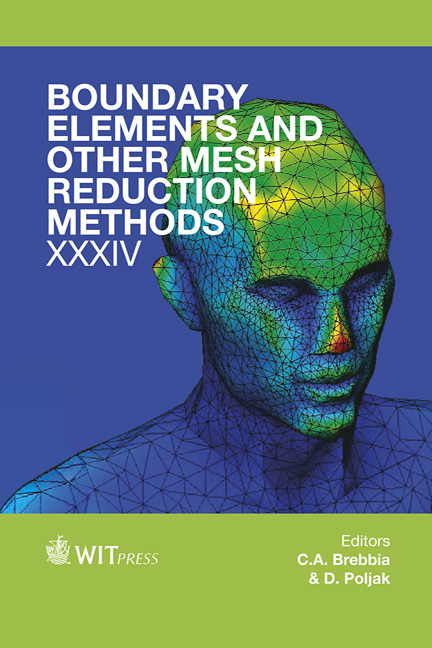3D Acoustic Simulation Inside Closed Rooms Bounded By Non-parallel Floor And Ceiling Surfaces
Price
Free (open access)
Transaction
Volume
53
Pages
10
Page Range
285 - 294
Published
2012
Size
899 kb
Paper DOI
10.2495/BE120251
Copyright
WIT Press
Author(s)
A. Tadeu1, I. Simões1, J. António1 & L. Sousa2
Abstract
3D acoustic simulation inside closed rooms bounded by non-parallel floor and ceiling surfaces A. Tadeu1, I. Simões1, J. António1 & L. Sousa2 1CICC, Department of Civil Engineering, Faculty of Sciences and Technology, University of Coimbra, Portugal 2ITeCons, Coimbra, Portugal Abstract A model for the simulation of the three-dimensional (3D) sound pressure level generated by acoustic sources inside closed rooms bounded by non-parallel floor and ceiling surfaces is presented. The 3D problem is solved as a sequence of two-dimensional (2D) problems with different spatial wavenumbers kz, after a spatial Fourier transform has been applied along the z direction, which is the width of the room. The problem uses a BEM formulation in the frequency domain. The use of analytically appropriate Green’s functions for wedges, defined by means of an image model technique, allows the required BEM discretization to be limited to the back and front walls of the room and avoids the discretization of the other flat surfaces. The model allows frequency dependent absorption coefficients to be defined for the various walls. In the case of the ceiling, floor and lateral room surfaces the absorption is introduced through the direct manipulation of the analytical Green's functions. The absorption of the back and front walls is simulated using impedance boundary conditions. Keywords: boundary element method, 3D source, sound absorption, pressure level inside auditoriums.
Keywords
boundary element method, 3D source, sound absorption, pressure level inside auditoriums.





